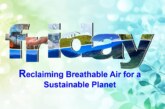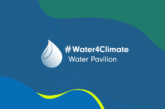
Dr. Arvind Kumar*
Our bond with the environment is fragile and should be restored. Are we breaking nature’s trust?
This question strikes at the heart of the ecological crisis of our time. For centuries, human societies have thrived by drawing from nature’s bounty yet, this bond, once rooted in reciprocity and reverence, has frayed under the weight of exploitation, pollution, and disregard. Nature operates on balance and trust. It offers resilience, but not without limits. The rise in extreme weather events, species extinction, soil degradation, and the plastic crisis signals more than environmental degradation—it reflects a breach of trust. Each unsustainable action chips away at this delicate relationship, making it harder for ecosystems to regenerate and support life.
Each year, World Environment Day and the International Day for Biodiversity remind us of our fragile bond with nature and the urgent need to mend it. In 2025, the themes “End Plastic Pollution” and “Living in Harmony with Nature” reflect a critical turning point in our planetary crisis, where plastic pollution threatens ecosystems, human health, and global sustainability. The fact that World Environment Day has adopted the theme of plastic pollution three times is a compelling indicator of the gravity and persistence of this global crisis. It underscores the urgent need for systemic change, sustained international cooperation, and a shift from linear consumption to circularity in our material use.
Since the 1950s, over 8.4 billion tonnes of plastic have been produced, with 14 million tonnes entering oceans each year. A 2024 study found microplastics in 100% of tested human blood samples, and even in placentas and breast milk—turning an environmental issue into a deeply human one. India alone generates 9.3 million tonnes of plastic waste annually, recycling only around 30%, despite strong campaigns like Swachh Bharat and Mission LiFE. Yet behind these statistics and solutions lie deeper questions: How did plastic become a silent contaminant in our bodies and ecosystems? Why do laws and global commitments so often fall short in action? Will biodiversity remain side-lined in global treaties—or finally be placed at the heart of policy? Why hasn’t awareness led to transformative behaviour or investment in circular solutions? And can we still view this crisis in silos or must we now confront it as a moral, developmental, and economic emergency?
A Crisis of Our Own Making
It is with this deep sense of urgency and hope that I reflect on the outcomes of June 3, 2025, when the India Water Foundation, with the support of the National Water Mission, Ministry of Jal Shakti, convened a High-Level Multi-Stakeholder Policy Dialogue. The purpose was clear to examine how plastic pollution and biodiversity decline are deeply interconnected, and to chart actionable strategies rooted in inclusivity, policy coherence, and true accountability. At the dialogue, I emphasized that plastic pollution is now a truly planetary crisis, affecting every ecosystem from mountaintops to ocean trenches. It is a threat not only to wildlife and biodiversity, but to human health and the very services that nature provides. Addressing this crisis requires us to look beyond piecemeal solutions.
India’s response, as highlighted by Shri Raj Bhushan Chaudhary, Minister of State, Ministry of Jal Shakti includes initiatives like Swachh Bharat Abhiyan, 1,790+ Rural Plastic Waste Management Units, and digital tools like the KabadMandi app—showcasing how plastic reduction, water conservation, and climate resilience are interconnected through efforts like “Catch the Rain – 2025. India has undertaken a range of ambitious initiatives in recent years in the food sector, the Food Safety and Standards Authority of India (FSSAI) enforces regulations to ensure safe and sustainable packaging, including strict limits on plastic use to prevent contamination. In agriculture, the government is promoting biodegradable alternatives to plastic mulching and sustainable farming practices that minimize plastic inputs. The textiles sector is seeing a push for sustainability through initiatives like Mission LiFE and Eco-Mark, which encourage eco-friendly production and circularity. While the Plastic Waste Management Rules now mandate traceability through barcoding and stricter Extended Producer Responsibility (EPR) for producers. As of December 2024, over 50,000 producers, importers, and brand owners are registered on the EPR portal, with more than 103 lakh tonnes of plastic waste processed through the system.
Our international colleagues brought valuable perspectives. Ms. Astrid Schomaker, Executive Secretary of the Convention on Biological Diversity, called for mainstreaming biodiversity across governance, business, and civil society. Ms. Kerry Allbeury (UNEP) shared that INC-5.2 negotiations for the Global Plastics Treaty will be held in August 2025 in Geneva, while Dr. Karine Siegwart (IUCN) stressed the need to explicitly include biodiversity, urging that nature-positive principles be central, not peripheral, to the treaty.
Adding a critical lens on accountability, Dr. Satya Tripathi, Secretary-General, Global Alliance for Sustainable Planet, reminded us that Hon’ble Prime Minister of India took a bold step in 2018 by proposing a global resolution to end plastic pollution—vetoed at the time, but ironically now central to international negotiations. As Dr. Tripathi noted, “India was ahead of its time, but while we made ambitious announcements, implementation has remained lackadaisical. This critique is especially relevant considering India’s commitment to eliminate single-use plastics by 2021, a goal that remains unmet. Despite strong policies like the Plastic Waste Management Rules (2016, amended in 2021) and bold national campaigns under Mission LiFE. India’s estimated plastic waste generation exceeds 9.3 million tonnes per year, with only ~30% of it being recycled, according to government reports. According to the report Plastic Waste Makers Index, India was the thirteenth-largest investor in single-use plastic polymer production globally. We continue to see rampant use of single-use plastics, and yet, the producers go unquestioned. Is there a lobby behind this impunity?
Likewise, Ms. Sara Manuelli from the FAO’s Mountain Partnership shed light on the impact of plastic in remote mountain ecosystems. She reminded us that microplastics have now been found at the summit of Mount Everest, threatening freshwater sources and local economies reliant on eco-tourism. She cited Nepal’s efforts in declaring Everest Base Camp a plastic-free zone, urging similar zero-waste tourism models elsewhere.
We also heard from Dr. Ritesh Kumar of Wetlands International, who warned that wetlands crucial for biodiversity are increasingly choked with plastics, threatening both ecological and economic services. He cited alarming data showing that stocks of plastics in aquatic environments could triple from 140 million tonnes in 2019 to nearly 500 million tonnes by 2060. These ecosystems, he noted, are not only transport corridors for plastic waste but also vital habitats being silently poisoned. Dr. Gopal, Deputy Country Representative at IWMI, stressed that “microplastics are everywhere, even in treated water!” a stark reminder of the invisible but pervasive nature of plastic pollution. Due to these persistent and escalating threats as Dr. Bholu Ram Yadav from CSIR-NEERI aptly pointed out, “Plastic is the only theme to repeat three times in World Environment Day history. That speaks volumes.”
Addressing plastic pollution requires navigating a web of challenges weak enforcement, inadequate infrastructure, limited community ownership, and poor data transparency. In India, while progressive policies exist, their implementation remains inconsistent. Sectors from agriculture (plastic mulch) to water (microplastics), textiles, and food packaging highlight the urgent need to shift toward resource efficiency and sustainable production. Strengthening Extended Producer Responsibility (EPR) through digital traceability as demonstrated by countries like South Korea and Germany alongside decentralizing waste infrastructure through scalable models such as Punjab’s Rural PWMUs, and mobilizing ESG-linked financing, as seen in Sweden and the Netherlands, were highlighted as critical enablers for driving innovation and accelerating clean-up efforts.
Way Forward
We need a strategic and cohesive roadmap to address systemic challenges in plastic governance. Key recommendations included integrating biodiversity considerations into the Global Plastics Treaty and aligning India’s Waste Management Rules with broader climate and ecological frameworks. Structural reforms are equally essential such as developing a National Accountability Dashboard to track plastic flows, compliance, and impact in real time, and institutionalizing circular economy targets across ministries including agriculture, textiles, and urban development. Localizing treaty implementation through state and district-level missions, supported by community-led plastic audits and decentralized waste management systems, can further embed sustainability at the grassroots. Finally, to truly close the loop, behavioural change initiatives must transition from awareness to quantifiable action while sustained investment in R&D for biodegradable alternatives and circular technologies remains crucial. The future we imagine that is cleaner, healthier, and more resilient won’t be delivered by declarations, but by decisions. It is time to act not as individual sectors or silos, but as one society, united by the common purpose of living in harmony with nature. The window to act decisively is narrow, but within reach and the responsibility to seize it belongs to all of us.
*Editor Focus Global Reporter






